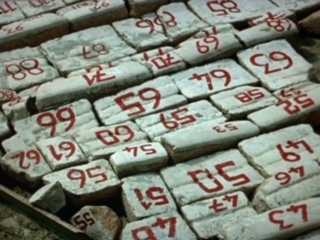There is a common denominator in Godard’s films, the construction of
history and memory. Themes of memory and time, how to record history, using
archives of images to tell a story, history as storytelling in an attempt to
arrange certain memories, the diffused boundaries between fiction and
non-fiction (documentary and fiction, the real and the imagined), cinema as
archive of time and memory, the image as archives of images of time; the
conception of cinema as both history and memory, a way of remembering the past
but also the present. This is a search to understand the cinematic construction
of history and memory in Godard’s films Notre
Musique and Tout Va Bien.
The first one ending with the reflection of being your own historian and
how that movie is a record of history for those who don’t keep one; the second
movie is a continuous use of images, sound, music, quotations to evoke a
reality that is not there anymore and its reconstruction through the use of
images and thoughts evoked by a landscape, an image of something that evokes
something else.
Specifically for this post I would like to focus on the construction of space, used as a tool for narration, in both films. In Tout Va Bien there is a Brechtian approach to history and the uprising events going in on in France in 1968.

In Notre Musique, Sarajevo becomes the stage, in this case a landscape. A landscape of memory and history in an attempt of being reconstructed, curiously done by an Israeli journalist, Judith Lerner (as in Tout Va Bien by Yves Montand) in many ways becomes a documentary portrait of this city that is being rebuilt after war through the questioning of other wars like the Israel and Palestine conflict. The camera becomes a silent witness of this portrait in the documentary scenes where we constantly see the daily life of Sarajevo through its streets and the visiting of the landscapes used for remembering the lost lives, (the markets, the streets with cars and pedestrians, the constant focus on the women and children on the street, the public transportation like trains are constantly making a pause on the film, a transition between documentary and fiction, between the true life characters like Godard and the poet playing themselves and the fictional characters like the journalist and the french young woman Olga).
 |
| A Bosnian women with her child. This sequence was followed by a sound mix of falling bombs. |
 |
| The journalist visits a memorial landscape, where the stones represent
the dead from August 1990-June 1997. The translator explains that each
stone is attached to a card and this card to a face and the information
of the position the body was found. |
The interesting use of documenting a landscape within the narration of the story in this film leads to the use of landscape as a stage, also like in Tout Va Bien, but this time it is a physical space that exists and its intervened with objects, books (piles of books brought by different people) and characters that interact with them by siting texts in reference to war, land, the dead, wars in the name of colonization, and the need for poets and writers so time can survive. There is also the landscape of the bridge that is constantly referenced through the narration of the story and the quest of the journalist of a past and present and its relationship to land (the war battles for land). This landscape is a space for imagination. At one point of Notre Musique there is a sequence of the journalist sitting in the middle of the shot by the bridge, when she looks to the right she see 3 Indigenous People in getting out and in a car, when she looks to the left she see them again but this time on horses and wearing the classical Indigenous American outfit, a shot and reverse shot. This sequence followed the visiting of the stones in the pictures above and the reading of a text that reflected on the me and the other, history and memory. The associations personal memory can come into play with contexts that resemble it, two truths that happened in the same time in history. The quest of the journalist as she reads Levinas Entre Nos, Restore the past and make the future possible.
 |
| Poet reads in spanish: Hay que hacer que la revolución cree una interminable fuerza de creación que fortalezca los recuerdos, que precise los sueños, que corporice las imagenes. That reserves for the dead a better fate. |
|
|
|
|
|
|
|
Deleuze wrote on Godard that his film is open and inclusive. He always used the word AND. In this case his films would be and attempt of History and Memory. A place for questioning, for dream and reality, for interior and exterior. History is the search within the memory of others and our own. Notre Musique is a shot and reverse shot of History and Memory, of me and the other, of the individual and society, living and death. Both Tout Va Bien and Notre Musique become Godards attempt of a historian. Sarajevo is a starting point to reconcile with the past by starting a conversation about the land a common land, a common landscape where you can then find forgiveness.
By Natalia Guerrero








